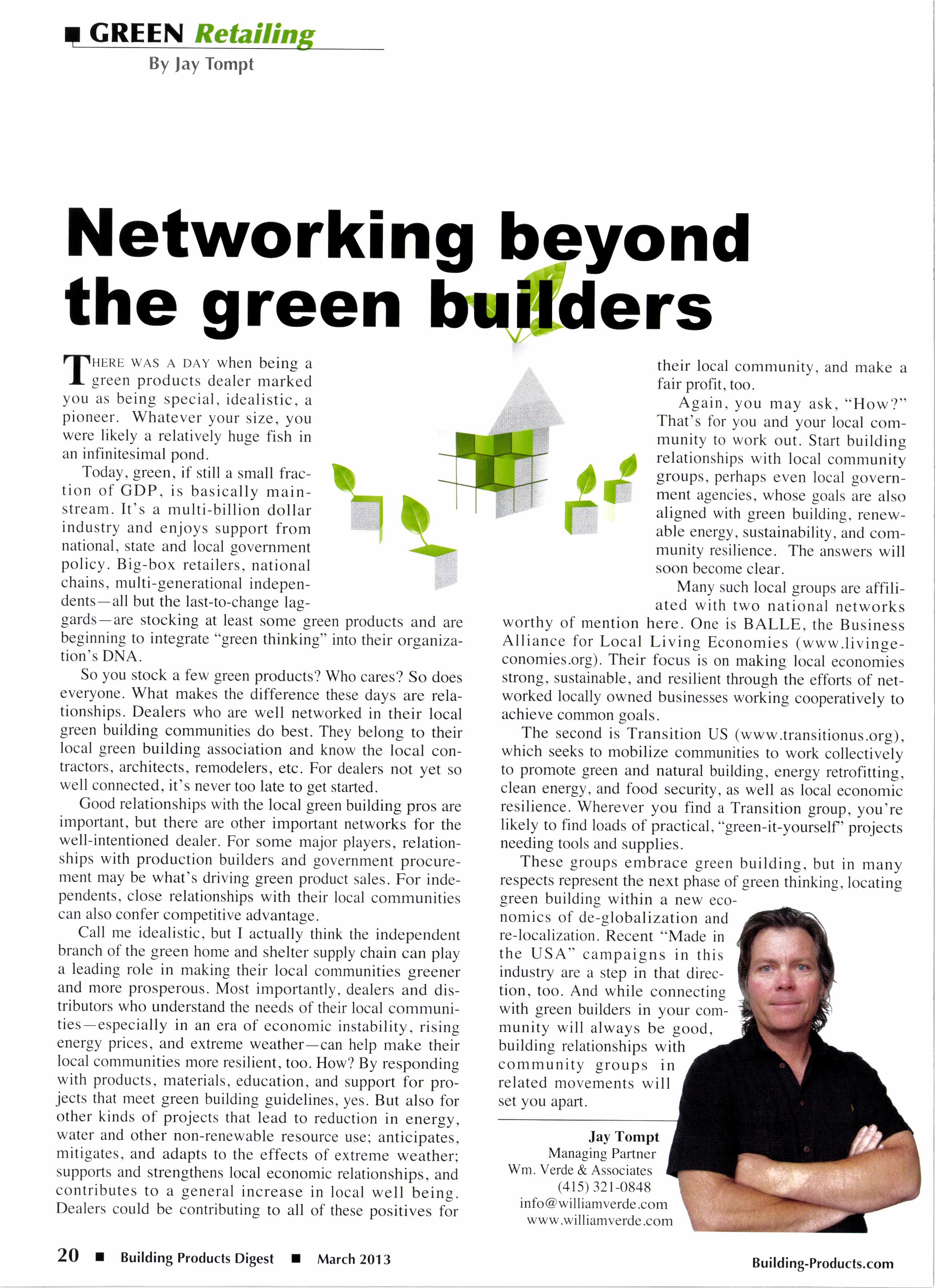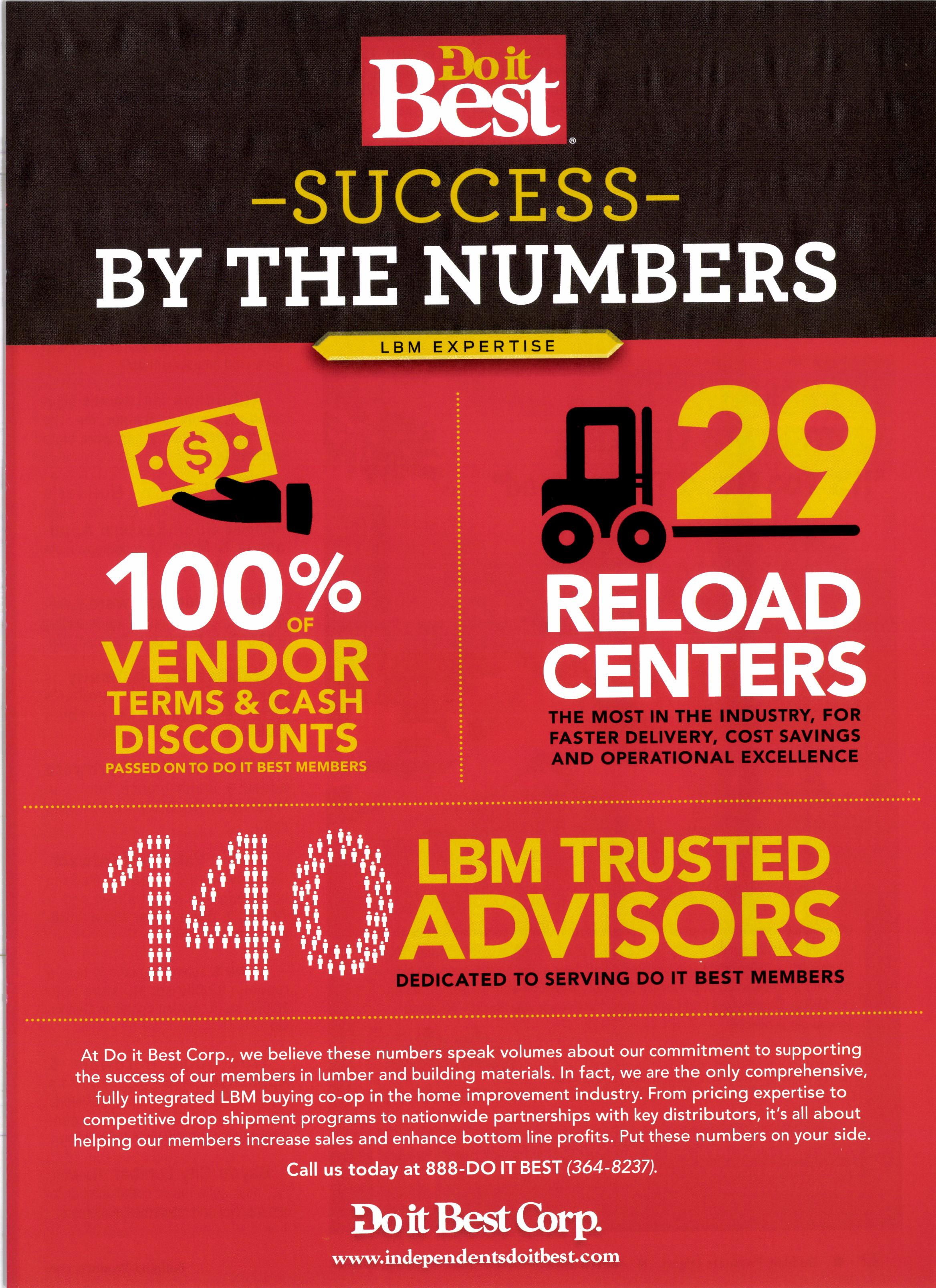
2 minute read
Networking yond the green ers
fHene \\'AS A ner when being a I green products dealer marked you as being special, idealistic, a pioneer. Whatever your size, you were likely a relatively huge fish in an infinitesimal pond.
Today, green, if still a small fraction of GDP, is basically mainstream. It's a multi-billion dollar industry and enjoys support from national, state and local government policy. Big-box retailers, national chains, multi-generational independents-all but the last-to-change lag- gards-are stocking at least some green products and are beginning to integrate "green thinking" into their organization's DNA.
So you stock a few green products? Who cares? So does everyone. What makes the difference these days are relationships. Dealers who are well networked in their local green building communities do best. They belong to their local green building association and know the local contractors, architects, remodelers, etc. For dealers not yet so well connected, it's never too late to get started.
Good relationships with the local green building pros are important, but there are other important networks for the well-intentioned dealer. For some major players, relationships with production builders and government procurement may be what's driving green product sales. For independents, close relationships with their local communities can also confer competitive advantage.
Call me idealistic, but I actually think the independent branch of the green home and shelter supply chain can play a leading role in making their local communities greener and more prosperous. Most importantly, dealers and distributors who understand the needs of their local communities-especially in an era of economic instability, rising energy prices, and extreme weather-can help make their local communities more resilient, too. How? By responding with products, materials, education, and support for projects that meet green building guidelines, yes. But also for other kinds of projects that lead to reduction in energy, water and other non-renewable resource use; anticipates, mitigates, and adapts to the effects of extreme weather; supports and strengthens local economic relationships, and contributes to a general increase in local well being. Dealers could be contributing to all of these positives for their local community, and make a fair profit, too.
Again, you may ask, "How?"
That's for you and your local community to work out. Start building
/ relationships with local community ment agencies. whose goals are also aligned with green building, renewable energy, sustainability, and community resilience. The answers will soon become clear.
E groups. perhaps even local govern- I t..
Many such local groups are affiliated with two national networks worthy of mention here. One is BALLE, the Business Alliance for Local Living Economies (www.livingeconomies.org). Their focus is on making local economies strong, sustainable, and resilient through the efforts of networked locally owned businesses working cooperatively to achieve common goals.
The second is Transition US (www.transitionus.org), which seeks to mobilize communities to work collectively to promote green and natural building, energy retrofitting, clean energy, and food security, as well as local economic resilience. Wherever you find a Transition group, you're likely to find loads of practical, "green-it-yourself' projects needing tools and supplies.
These groups embrace green building, but in many respects represent the next phase of green thinking, locating green building within a new economics of de-globalization and re-localization. Recent "Made in the USA" campaigns in this industry are a step in that direction. too. And while connecting with green builders in your community will always be good, building relationships with community groups in related movements will set you apart.
Jay Tompt Managing Partner Wm. Verde & Associates (415) 321-0848 info@ williamverde.com

CNRG Picks Up Harvey
Central Network Retail Group, Natchez, Ms., has acquired out of bankruptcy W.T. Harvey Lumber, with stores in Columbus, Ga., and Phenix City, Al.
Opened in 1863, Harvey will continue to be managed by the founder's great-great grandson, Bailey Gross.
Hines Reopens Wheaton Yard
US LBM Holdings division Edward Hines Lumber, Buffalo Grove, I1., inked a lease on the former site of F.E. Wheaton Lumber, Wheaton, Il., to open a full-service building supply center and showroom by May.










